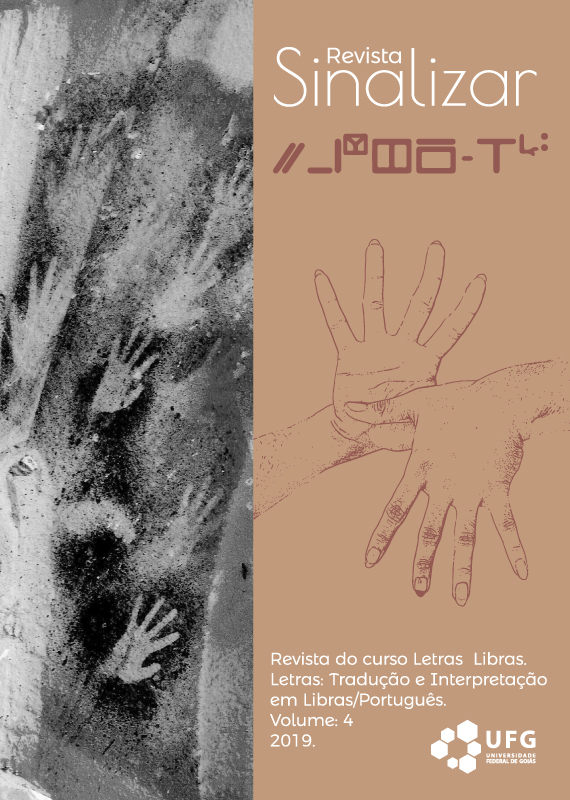Comparison between three hand configuration notation systems based on Libras data
DOI:
https://doi.org/10.5216/rs.v4.56832Keywords:
Notation, Hand configuration, PhoneticsAbstract
The hand configuration is one of the articulatory parameters based on which signs can be analyzed. It refers specifically to the different states of the finger joints, potentially distinctive, but also subject to great intra and intersubjective variation. In this work, three proposed notation systems for this parameter are compared: Stokoe (1960), Liddell and Johnson (1989) and Johnson and Liddell (2011 and 2012), aiming to demonstrate, based on data from Libras, that the third of them is more appropriate for the phonetic analysis of signed languages. The data from Libras analyzed here refer precisely to one of three productions of 26 of the 60 signs originally collected by AUTOR and AUTOR (ANO) from 12 deaf subjects (six men and six women) from the city of São Paulo. The criterion for selection of these signs was the presence of the hand configuration B (open fingers and joined by the sides) and the hand configuration 5 (fingers open and flat). With this, 188 productions were selected and analyzed. The results indicate that the Stokoe (1960) system has a more phonological character, that of Johnson and Liddell (2011 and 2012), a more phonetic character and that of Liddell and Johnson (1989), an intermediate character between the first two.
Downloads
Downloads
Published
How to Cite
Issue
Section
License
Copyright

This work is licensed under a Creative Commons Attribution-NonCommercial-NoDerivatives 4.0 International License.
Autores que publicam nesta revista concordam com os seguintes termos:
Autores mantém os direitos autorais e concedem à revista o direito de primeira publicação, com o trabalho simultaneamente licenciado sob a Creative Commons Attribution License que permitindo o compartilhamento do trabalho com reconhecimento da autoria do trabalho e publicação inicial nesta revista.
Autores têm autorização para assumir contratos adicionais separadamente, para distribuição não-exclusiva da versão do trabalho publicada nesta revista (ex.: publicar em repositório institucional ou como capítulo de livro), com reconhecimento de autoria e publicação inicial nesta revista.







